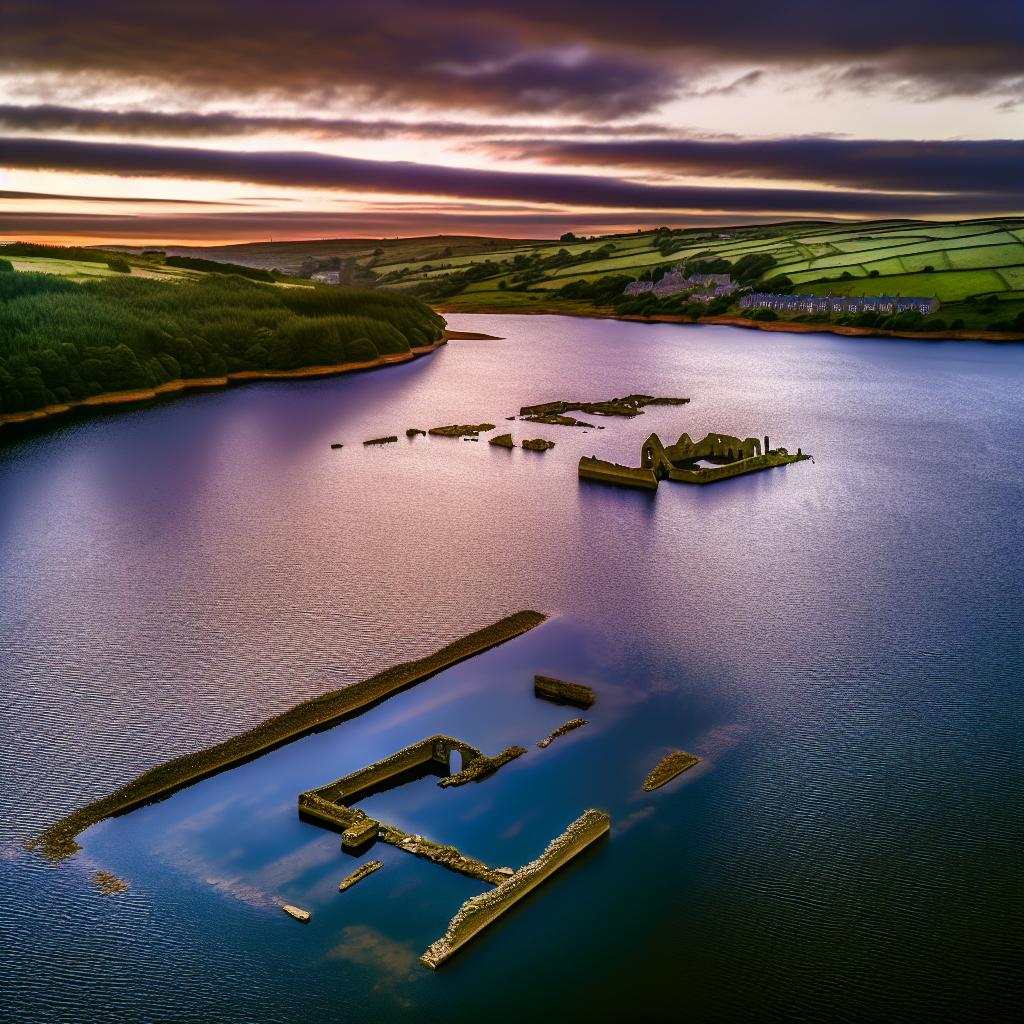The Story of Sunken Villages in UK Lakes
The United Kingdom, a nation renowned for its extensive history and captivating natural sceneries, harbors numerous intriguing fragments of the past. These hidden legacies are concealed beneath the waters in several lakes and reservoirs across the country. Known collectively as the sunken villages, these submerged settlements are not just curious features of the landscape, but are also keepers of stories about communities that were relocated and lives that changed dramatically as a result.
Origins of Sunken Villages
The origins of these sunken villages can be traced back to the 19th and early 20th centuries when there was a growing demand for a reliable water supply. As cities expanded and industrial centers thrived, the necessity for adequate water resources became paramount. To satisfy this demand, numerous reservoirs were constructed across the UK. However, these projects often came with the requirement of flooding areas that were already populated. Typically located within valleys, these areas were ideal for reservoir creation, yet occupied villages had to be displaced to make room for progress. The underlying intent was to support burgeoning urban developments and the relentless march of industrialization.
Notable Sunken Villages
Derwent, situated in Derbyshire, stands out as one of England’s most famous examples of a sunken village. The creation of Ladybower Reservoir in the 1940s led to Derwent’s partial submersion. It periodically reemerges, especially when water levels drop considerably. What remains visible, notably the church spire that often juts out above the water, continues to capture both public imagination and historical intrigue.
Meanwhile, in Wales, the story of Capel Celyn is both poignant and politically charged. Submerged in 1965 to create the Tryweryn Reservoir, the village’s flooding was met with significant resistance from the local Welsh-speaking populace. Despite fervent opposition, the project proceeded, and Capel Celyn was lost beneath the waters. This event stirred national sentiment, contributing extensively to the rise of the Welsh nationalist movement. Over time, Capel Celyn became much more than a submerged village; it evolved into a powerful symbol of cultural identity and the struggle for national self-determination.
The Process of Submersion
The process involved in creating these reservoirs was monumental in scale and impact. It often began with the issuance of notices to entire communities, marking the impending submersion. The acquisition of properties followed, with landowners, farmers, and business operators needing to either abandon or relocate their establishments. Compensation was typically provided to the displaced; however, monetary reparation could scarcely replace the deep sense of loss that accompanied leaving behind a beloved community and an entire way of life. Homes that held generations of memories, local businesses that formed the backbone of village economy, and farms that had sustained livelihoods all had to be left behind.
Rediscovery and Interest
In contemporary times, interest in these sunken villages has seen a remarkable increase. This burgeoning fascination is not limited to historians and archaeologists; it extends to tourists and casual explorers as well. Periods of drought wield a special magic over these hidden villages: lowering water levels reveal the forgotten remnants of life before submersion, providing rare windows of opportunity for extensive research and exploration.
For those keen on unraveling more about these enigmatic sunken villages, resources abound. A wealth of information is available through historical repositories such as the Historic England website, along with more locally-focused historical groups and organizations that have diligently archived narratives and data about these lost communities.
The sunken villages in the UK are not mere relics from yesteryear but are poignant indicators of sacrifices made in the pursuit of modernity and growth. They challenge us to reflect on decisions made in the past while urging a thoughtful consideration of how we might balance the needs of humanity with the preservation of heritage in the future. As we navigate the complexities of progress, these submerged stories offer a gentle reminder of the delicate balance between what is gained and what is lost in the name of advancement.
